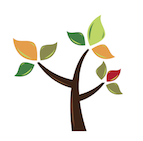Suicide Hotline – Other Hotlines – Find Help or 211
SLGC is an internet community designed to bring helping professionals and every day people together who are interested in building sustainable communities.
Basic Membership – A basic $2.00/month membership is required to be a part of the community. The 2.00 fee grants access to the forums and community.
Course Rates – Courses are taught in groups of up to 30 people at a time. The fee for this is 20 dollars per session. Course lengths are relative to the material each course contains. In general courses are designed to be 6 weeks long. Courses can be taught 1:1 for 100 dollars per hour. I schedule 1.5 hours for group course sessions and 45 minutes for 1:1 individual sessions.
Course delivery – Much like an on-line college course, there is a live session over zoom. Prior to the course, individual’s will receive access to course materials via the website or e-mail. Interaction with the course lead and other students via forum board is encouraged but not required. Attendance at the live session is encouraged but not required. How you decide to interact with the materials you receive is up to you.
The philosophy, history and development of SLGC can be found here. The concept of SLGC in its entirety can be found here.
Courses in development:
Emotional Intelligence – This course examines some of the history and research behind emotion, identification of emotions within oneself, identification of emotions in others, how to regulate emotions and how to use emotions to improve performance. It uses a positive psychology framework.
